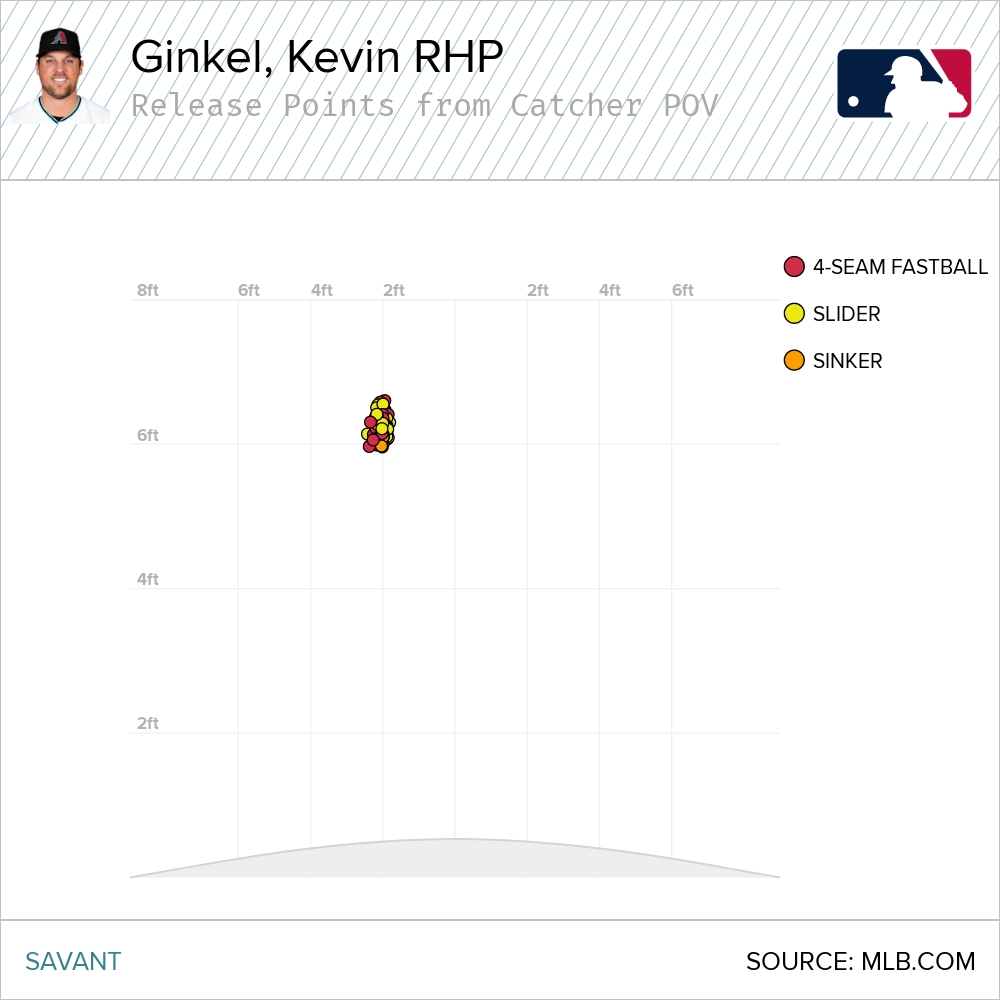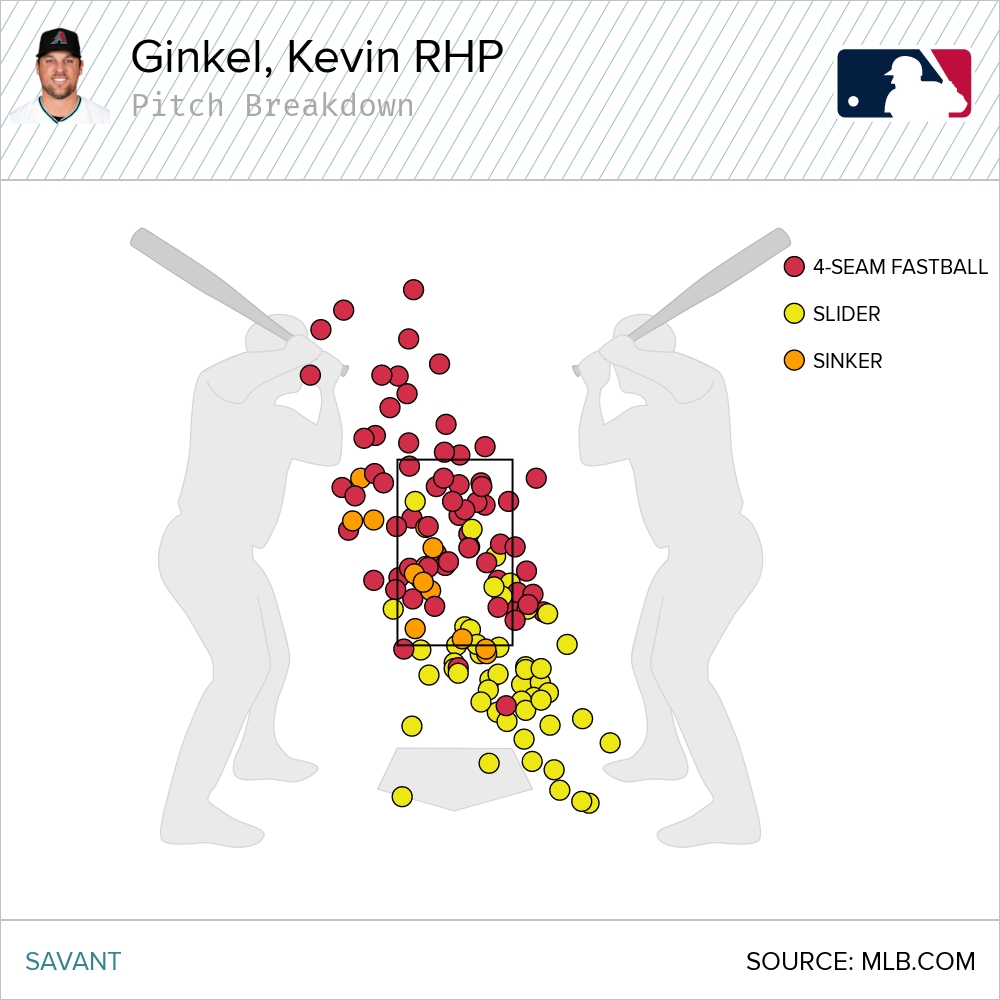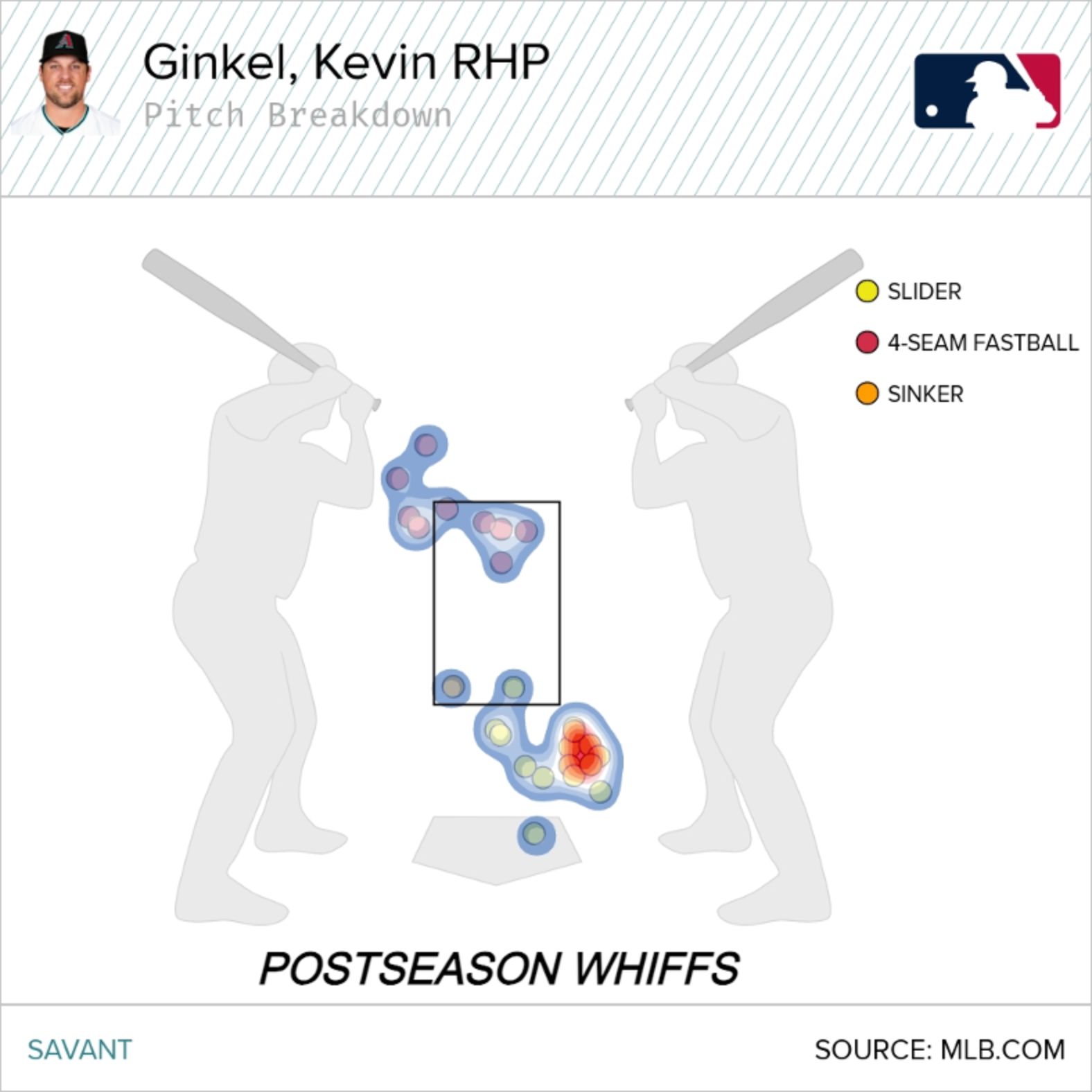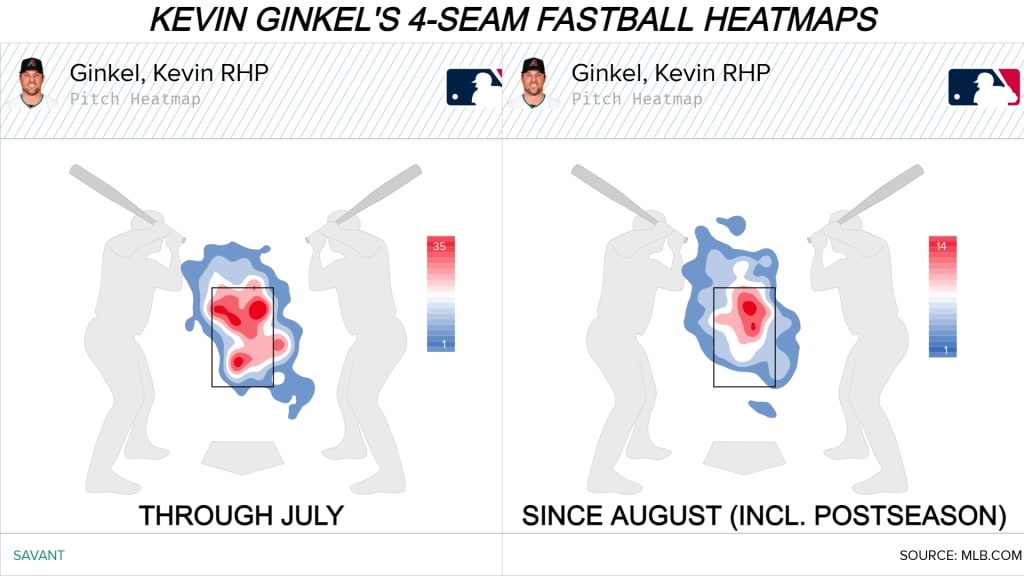The D-backs' pennant run has turned Kevin Ginkel into something of a folk hero.
The 29-year-old reliever has gone from a fungible bullpen cog who was sent down to the Minors in June to the guy who shut down the Phillies ... and the Dodgers ... and the Brewers ... in every key late-inning spot during Arizona's magical run to the World Series.
Here's how he did it.
First, let's just admire what Ginkel's done so far. The D-backs setup man hasn't allowed a run in eight postseason appearances, and he was brilliant in the National League Championship Series, when he pitched in all four of Arizona's wins. It was Ginkel on the mound for one of the most critical moments of Game 7 in Philadelphia: The right-hander came in to retire Phillies superstars Trea Turner and Bryce Harper with the tying runs on base in the seventh inning, then struck out the side in the eighth for good measure.
As this underdog D-backs team takes on the slugging Rangers in the World Series, they'll be turning to Ginkel to get some of the biggest outs of the Fall Classic.
So what changed from the summer to the fall? How did Ginkel mow down the Milwaukee, L.A. and Philly lineups and lead the D-backs to upset after upset?
These are the three keys to Ginkel's transformation into an October X-factor.
1) His slider is a hammer
If you've watched Ginkel this postseason, what stands out is his slider. It's been a monster pitch.
Ginkel throws a power slider that breaks almost straight down -- it's averaged 88 mph in the playoffs, with 37 inches of vertical drop and only 4 inches of horizontal break. It induces about 4 inches more downward movement than an average big league slider. When he struck out the side in the eighth inning of Game 7 of the NLCS, all three K's were on that slider.
Ginkel's slider starts like a high fastball, then plummets from the hitter's eyes straight down through the bottom of the strike zone.
He delivers the slider from the same high over-the-top release point as his fastballs -- at 6 feet, 5 inches, he has one of the highest vertical release points of any pitcher in the playoffs -- and he also has high extension, meaning he releases the pitch far in front of the rubber. Ginkel's average extension of 6.9 feet ranks in the 88th percentile of MLB pitchers.

Ginkel's high vertical release and high extension allow his slider to play up, both because it resembles his fastball and because he cuts down on the hitter's decision time.
Ginkel has generated 25 swings-and-misses this postseason. Fifteen of those whiffs have come on his slider, compared to nine on his four-seamer and one on his sinker.
2) He's turned that slider into an elite chase pitch
But before he could dominate the postseason, Ginkel had to unlock the potential of that slider.
The biggest difference from Ginkel early in the season to Ginkel now isn't his stuff; it's how he's locating his stuff.
Ginkel mastered his slider by turning it into an elite chase pitch. When Ginkel went to the Minors, he was throwing his slider in the strike zone too often. He wasn't taking advantage of its vertical, power-pitch profile. But once he returned to the Majors, the transformation slowly began. By August and September, Ginkel had zeroed in on the chase regions below the strike zone with his slider, while continuing to challenge hitters in the zone with his mid-90s fastball. And in the postseason, he's gotten even more extreme.
Ginkel's slider in-zone %
Through July: 42%
August/September: 29%
Postseason: 18%
Now, Ginkel pounds the upper part of the strike zone with his four-seamer and then buries his slider. That's made all the difference.
Four out of five sliders that Ginkel's thrown in the playoffs have been out of the strike zone, and nearly all of those have been low sliders, underneath the zone. It's one of the heaviest out-of-zone pitches of the 2023 postseason.
Pitch types thrown out of zone the most, 2023 postseason
Min. 25 thrown of that type
- Zack Wheeler's curveball: 92%
- Ranger Suárez's changeup: 89%
- José Leclerc's changeup: 88%
- Zac Gallen's cutter / Kevin Ginkel's slider: 82%

Ginkel has basically turned his slider into Blake Snell's slider, or Tyler Glasnow's curveball, or Shohei Ohtani's splitter -- a high-velocity secondary pitch with sharp drop and a vertical direction that he throws almost exclusively as a chase pitch down below the strike zone.
- Ginkel's slider, postseason:
88 mph, 37" drop / 4" break, 82% out-of-zone - Snell's slider, 2023:
88 mph, 28" drop / 3" break, 72% out-of-zone - Glasnow's curveball, 2023:
84 mph, 53" drop / 1" break, 73% out-of-zone - Ohtani's splitter, 2022:
89 mph, 32" drop / 6" break, 71% out-of-zone
And just like with those aces and their wipeout pitches, opposing hitters simply haven't been able to lay off Ginkel's nasty sliders in the playoffs. Ginkel has induced a 53% chase rate on his slider this postseason, and the Phillies chased over half of them in the NLCS.
Pitch types inducing the highest chase rate, 2023 postseason
Min. 25 out-of-zone pitches of that type
- Kevin Ginkel's slider: 53%
- Bryan Abreu's slider: 52%
- Ranger Suárez's curveball: 51%
- Nathan Eovaldi's splitter: 51%
- Brandon Pfaadt's sinker: 46%

The Rangers are a disciplined team. They chase less than any team in baseball. But will they be able to check their swings against Ginkel in the World Series when the Brewers, Dodgers and Phillies couldn't?
3) He's fastball-first … until he's not
The last part of Ginkel's evolution over the course of the regular season and into the playoffs is his pitch usage.
With how good Ginkel's slider is, and the general trend of pitchers, especially relievers, going more spin-heavy in the playoffs, you might be surprised to see that he's actually thrown more fastballs as the year has gone on.
Ginkel's 4-seamer vs. slider usage, 2023
Through July: 46% 4-seam, 44% slider
August/September: 50% 4-seam, 42% slider
Postseason: 52% 4-seam, 38% slider
Ginkel has learned to trust his fastball. It's a good fastball -- hard (96 mph average velo) and effective (.229 batting average allowed in 2023 between the regular season and postseason).
His locations of his fastball have gotten better, too. That's another big change Ginkel has made over the stretch run. He's focused on elevating his four-seamer and pitching on the glove side, directly above where he throws his slider.

He's not afraid to challenge even the best hitters in the biggest spots. Look at how he attacked Harper in the seventh inning of Game 7 with a World Series berth on the line. Ginkel buried his sliders as usual, but he went after Harper in the heart of the zone with his fastball, and Harper flew out to center field to end the Phillies' last threat of the series.
In the playoffs, Ginkel has also stuck to a general philosophy of: sliders when he gets ahead, fastballs if he falls behind. He's thrown 54% sliders compared to 41% four-seamers when ahead in the count, and 71% four-seamers to 18% sliders when behind, plus a handful of sinkers in both situations.
That looks like a very traditional approach. But then Ginkel gets to two strikes. And you don't know what's coming.
Ginkel has thrown 36 two-strike pitches this postseason. Exactly half have been four-seamers, and exactly half have been sliders.
In other words, Ginkel will attack the hitter as the circumstances of the at-bat warrant, but once he gets himself into a putaway situation, that's when he's at his most deceptive. Just one more reason no one's been able to get to him yet, with only the World Series to go.
